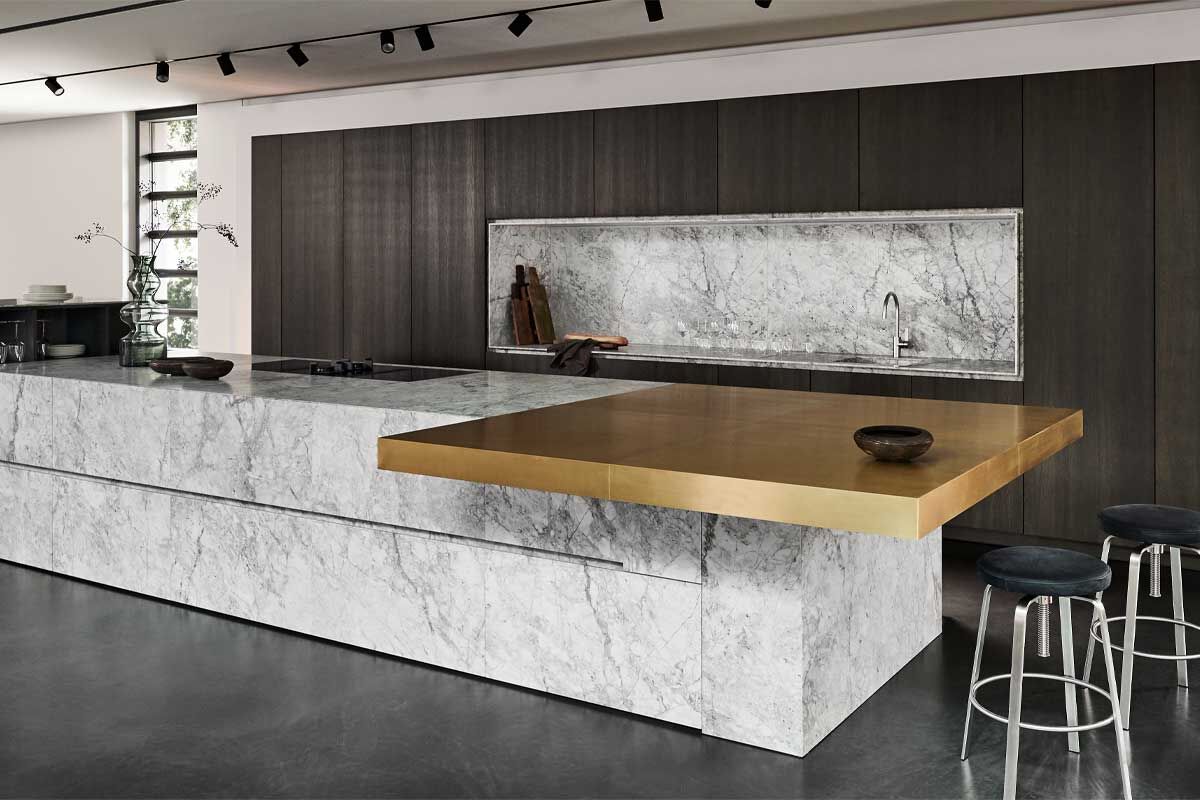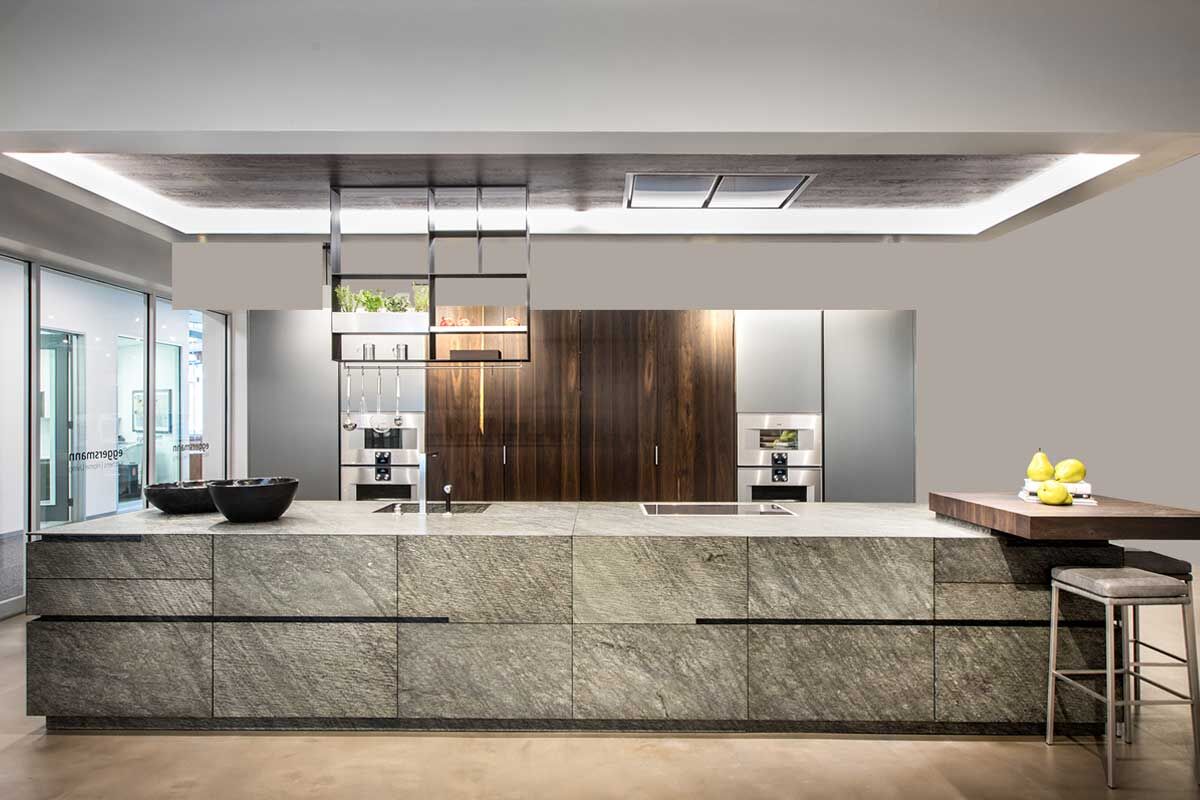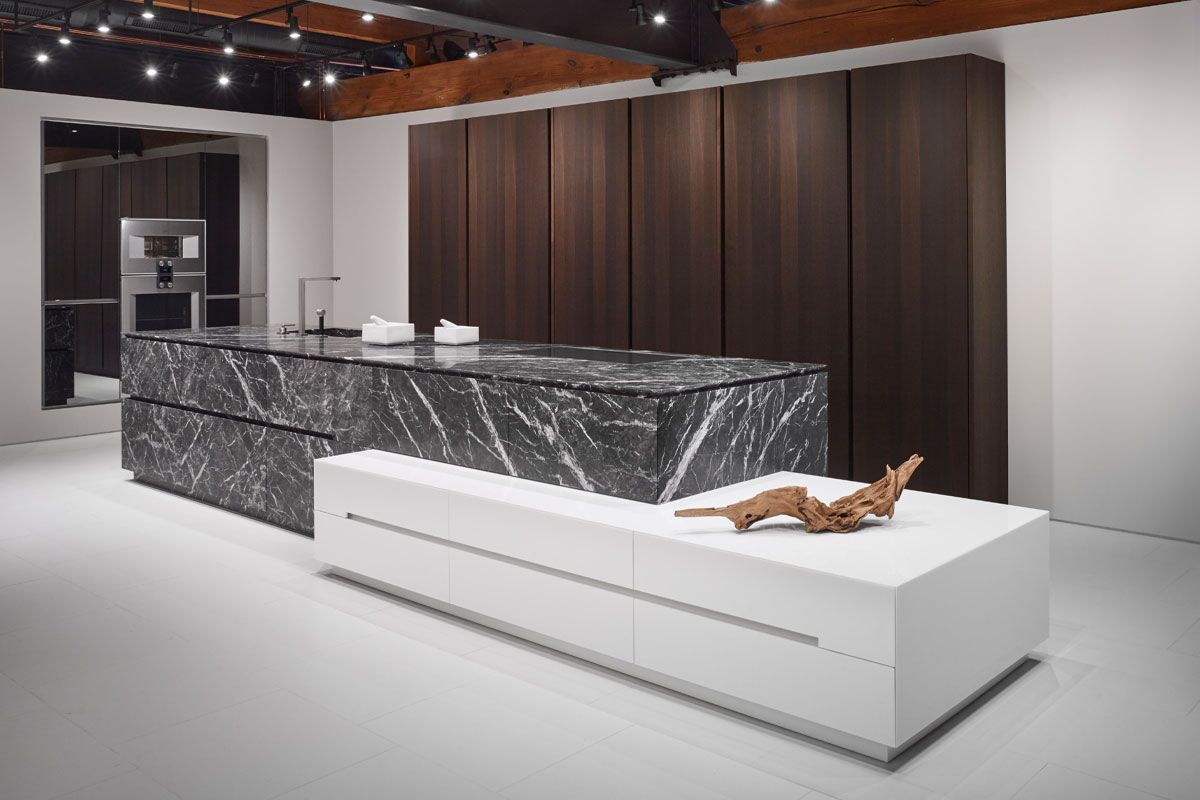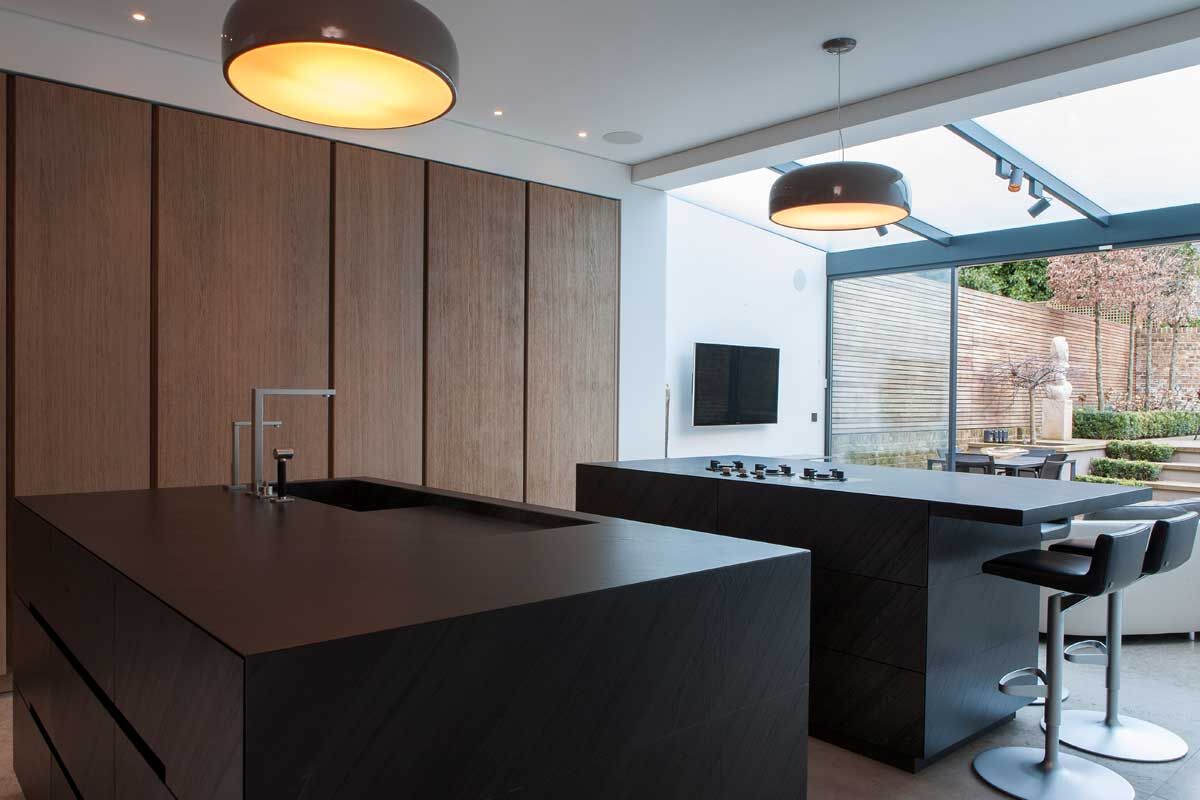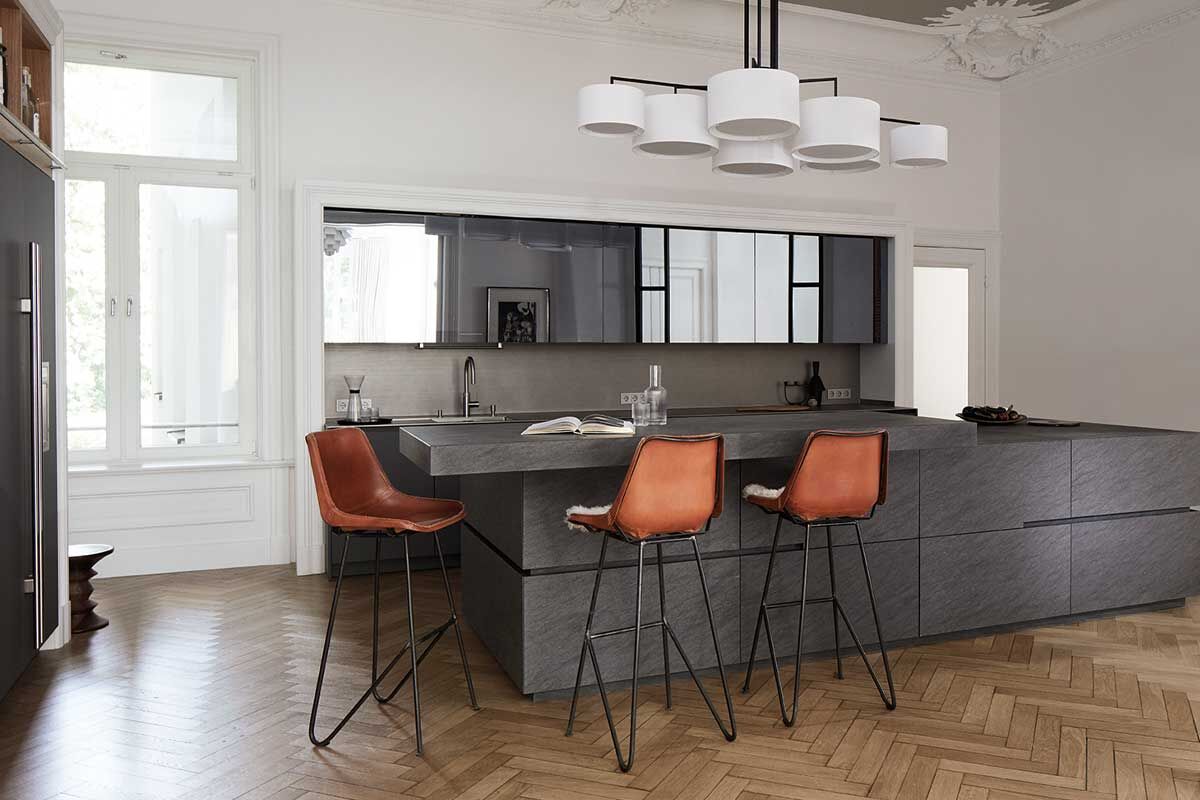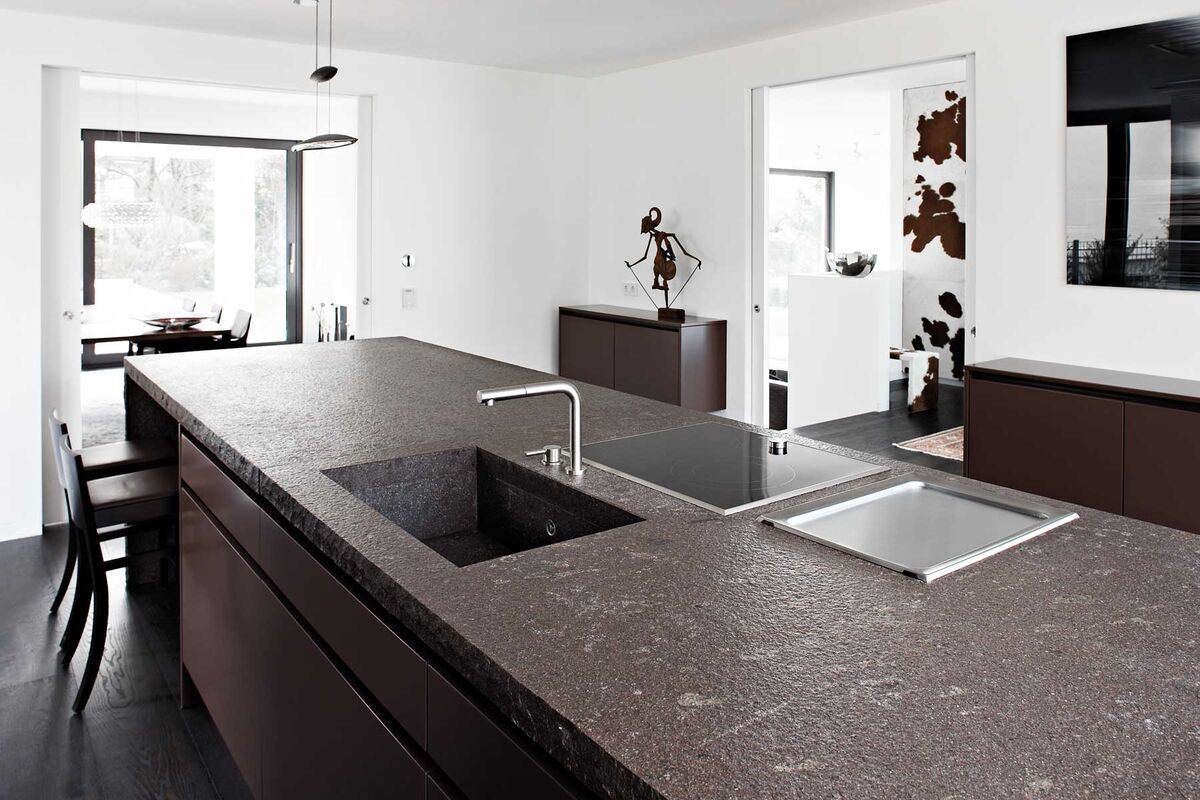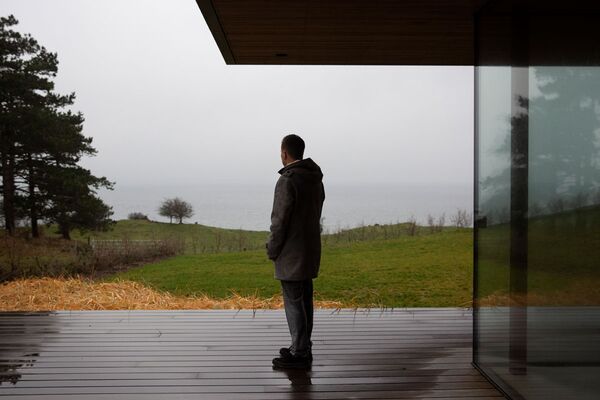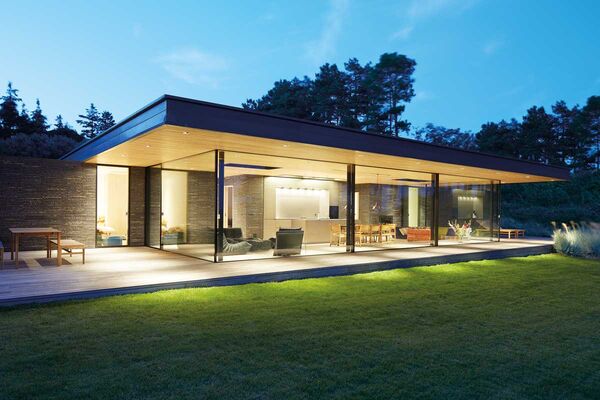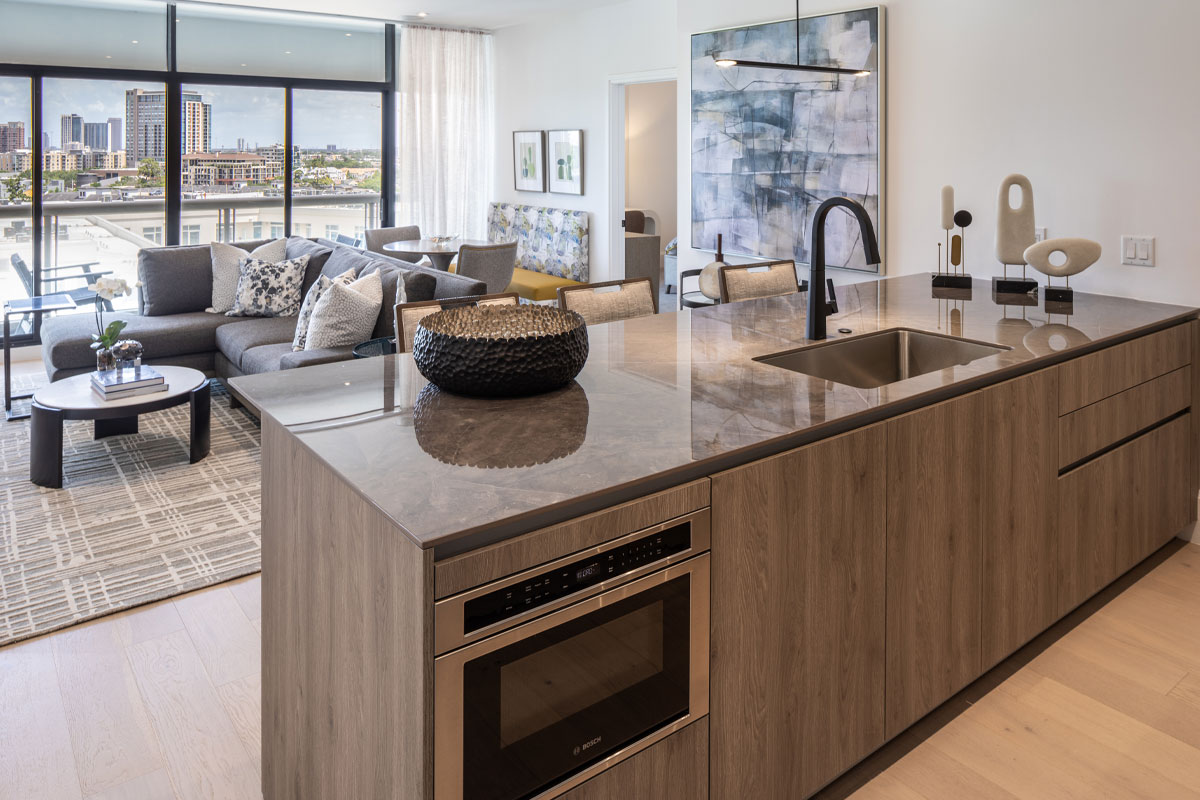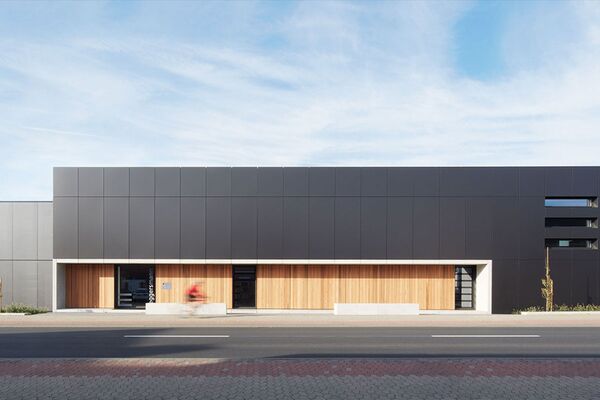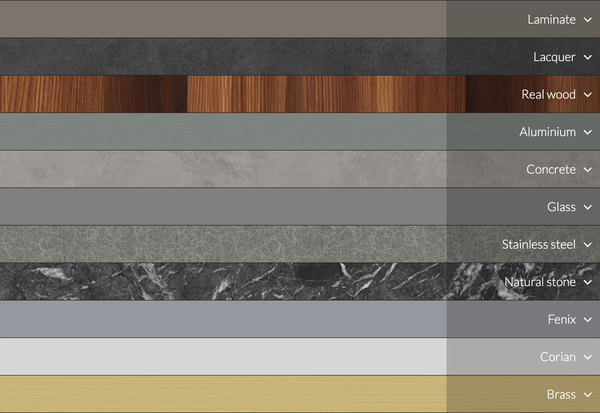
“It's like condensed energy”
Where does this fascination for natural stone kitchens come from? Why do people love to touch them? A conversation with Walter Schwanekamp, our long-standing collaborative partner, about exactly that: Stone
Interview: Oliver Geyer
What, in your opinion, is the special strength of natural stone as a kitchen material?
First of all, the sheer material quality. Natural stone offers a wide range of qualities, from the more sensitive marble and limestones to the hard granite and granite-like stones. The latter in particular are extremely robust and resistant to scratches and acids. Natural stone is also completely unaffected by light because there is no binder or adhesive in it that could yellow under strong sunlight. This is because we do not coat the stone but impregnate it. This closes the microfine pores in the stone – the best protection against fats and oils. This indestructibility and durability are extremely important for German customers in particular.

Walter Schwanekamp is the senior boss of the family business Schwanekamp GmbH in Gescher, Münsterland, Germany. For more than 60 years, the company has been perfecting natural stone solutions in furniture construction as well as in product and interior design – and has advanced them with significant innovations.
Is it different elsewhere?
Oh yes, with the Italians, for example. That’s also a cultural question and a question of tradition. There, marble has long been a common material in kitchens, probably even since ancient times. There is a greater acceptance of the fact that a stone like this shows signs of wear and patina. People have a thing for it. They have a particularly emotional connection to the material. In fact, marble with its beautiful pattern is very appealing. For me, that is the other great strength of natural stone: Its emotional value.
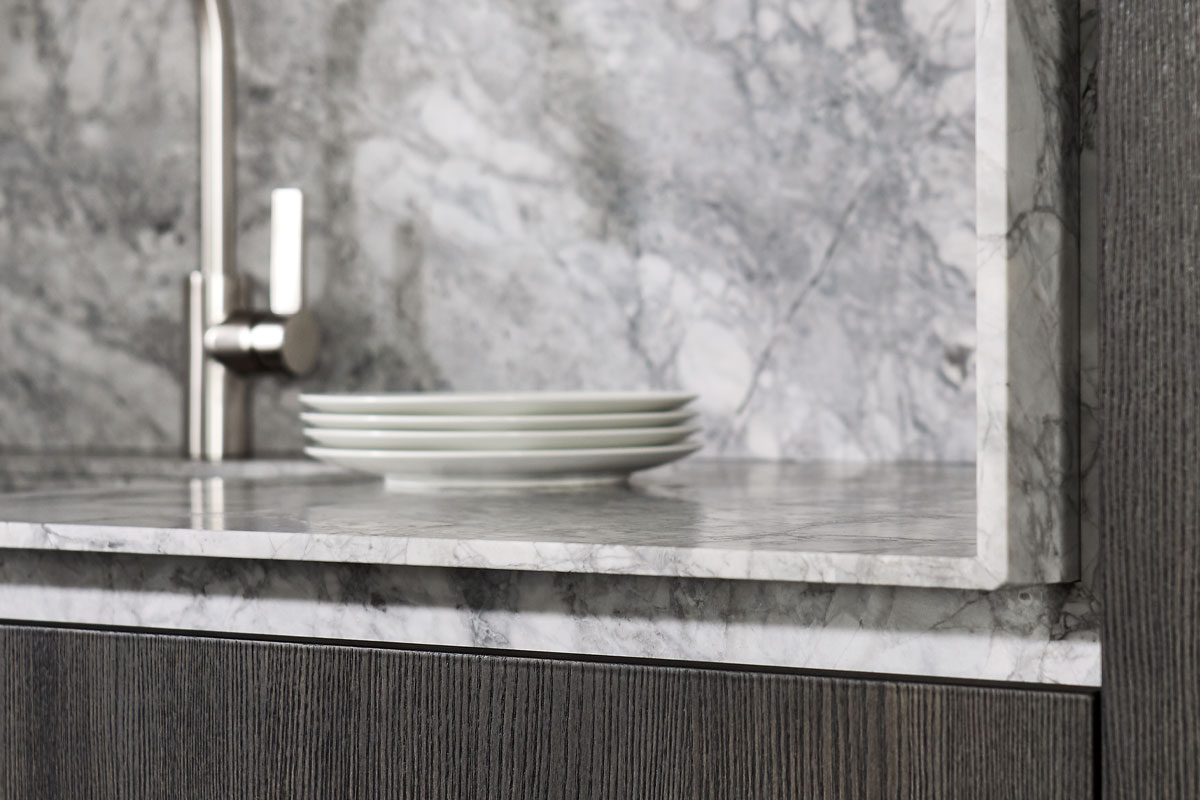
On your website, you say that a dialog develops between the viewer and the stone. What is meant by that?
The word “appealing” is used for a reason. Sensitive people definitely have a feeling that such natural stone does something to them as viewers. There are even more esoteric views that certain stones have a healing effect. That may be, but you don’t have to go that far. Natural stone is simply a living material, because millions of years of geological history and natural history are stored in it. You could also call it condensed energy. That certainly accounts for part of the fascination. Man-made materials can also look great, but in contrast they have a certain detachment. They lack this immediacy.
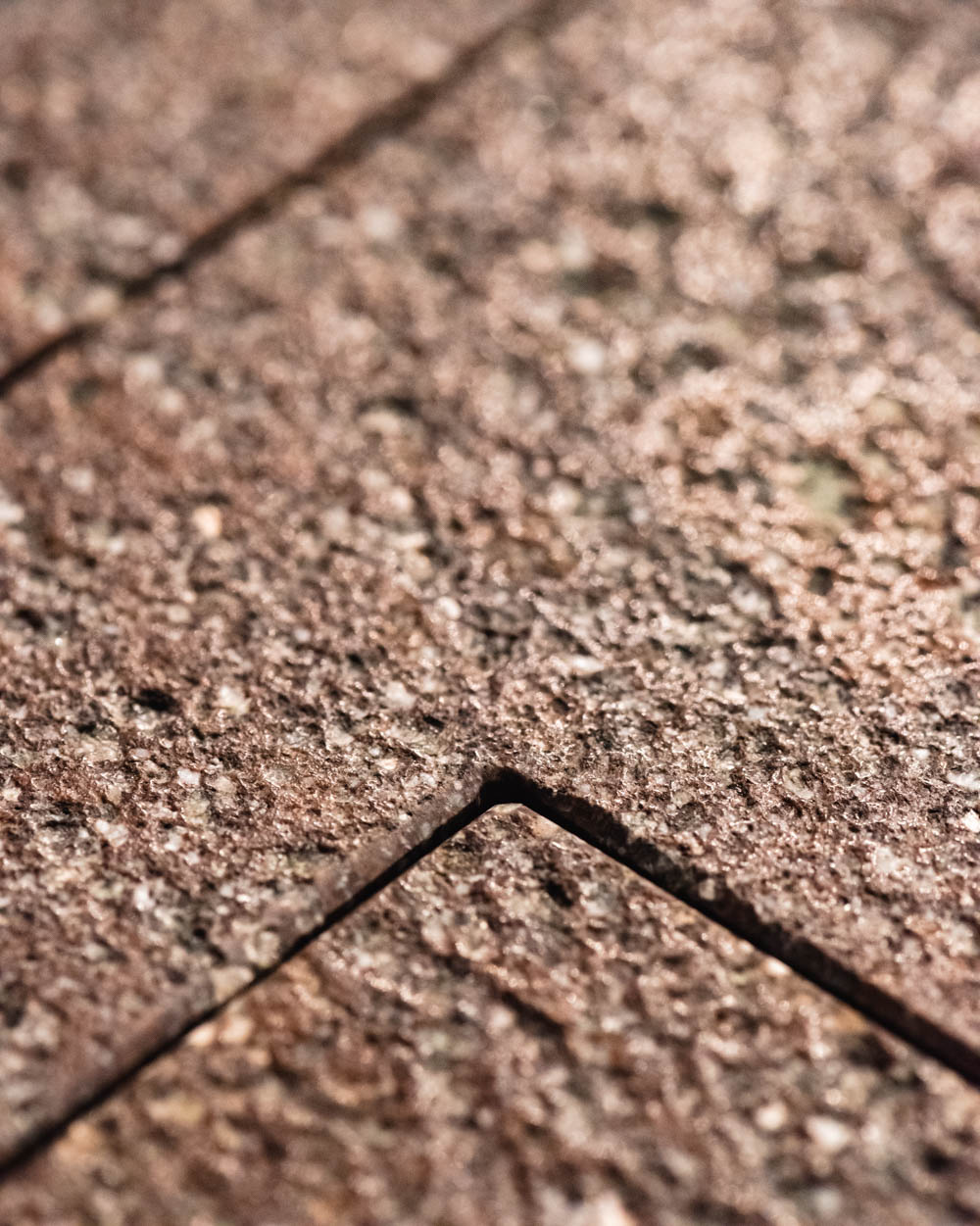
From color psychology we know that certain colors have a stimulating, others a calming effect. Are there also any findings on the psychological effect of natural stone?
We can observe this: The kitchen studio’s door opens, the customer comes in, they first walk towards a natural stone kitchen and instantly touch the stone and its surface structure. Haptics play a major role, how the hands take it in: This is pleasant! And that then becomes a fixed feeling: I want to stay here.
An effect that also promotes sales.
(Laughs) Right, because it ties in with people’s positive feelings and memories. For example, sitting on the pleasantly warm rock at the seaside on your last vacation, which was so beautifully surrounded by the water. Much like the satin surfaces in an eggersmann kitchen. Something like this creates good associations.
“SENSITIVE PEOPLE CAN FEEL THAT NATURAL STONE LIKE THIS DOES SOMETHING TO THEM.”
For this to happen, technical hurdles first had to be overcome. What were they?
In Germany, the subject of kitchens and natural stone is still relatively new. It started in the 1980s with four-centimeter-thick solid granite slabs – and the considerable efforts that came with it. One square meter of this material weighed 120 kilos. Delivering a countertop became a small company outing each time. So, we finally arrived at this conclusion: We have to make the material lighter and easy to assemble. And that’s exactly what we succeeded in doing at the end of the 1990s. With a patented system of how granite is cut out of a block so that the slab is calibrated to be only twelve millimeters thick, exactly the same thickness, and supported by reinforcement – a frame substructure with a screwable base. Today, a natural stone countertop is a matter of course. And from the pen of eggersmann’s design team, beautiful variants have now been added, such as the sliding slabs in the 11 mm design.
Together with eggersmann, you also developed the technique of having natural stone applied to the other visible surfaces of the kitchen – creating the typical monolithic look. How did that come about?
The challenge was initially to integrate the load-bearing substructure of the stone into the furniture in such way that it was no longer visible. Then, at some point, together we managed to interlock the thin stone slabs directly with the furniture and also adapt them to the pullouts. For the monolithic effect of the kitchen islands in particular, it was also crucial that we developed the handleless natural stone kitchen: Handle profiles, which were otherwise made of metal or wood, were made of stone and also integrated into the furniture. But to achieve all this, our company Schwanekamp GmbH also had to reinvent itself.
In what respect?
As stonemasons, we were a traditional craftsman’s business practising classic building trades such as windowsills, stairs and gravestones. That’s why we needed a renaissance and it’s where my civil engineering skills came in handy. In that field, constructions for connecting stone and steel play a decisive role, and we were able to implement this similarly for natural stone. So we managed to make these light, thin slabs so strong that they behave exactly like solid granite slabs. The important thing is that we have retained a certain sensitivity in this more engineering, industrial way of thinking: We’re dealing with natural stone here. The final finishing of chamfers and edges is still done by hand.
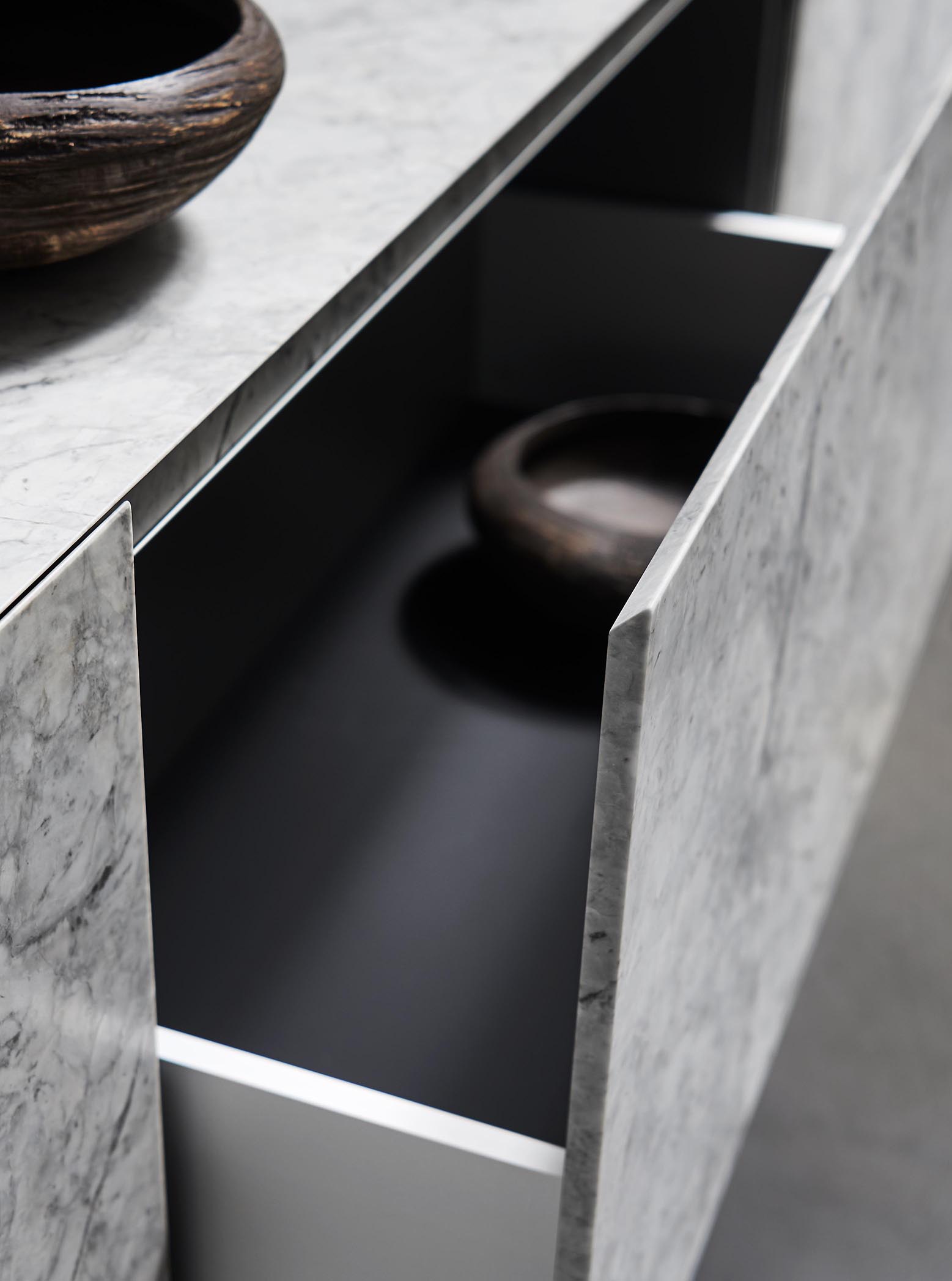
The material savings also made it even more resource-efficient. What about the ecological compatibility of natural stone in general?
What is good above all is that the transport effort has been considerably reduced. Stone as a resource is available in abundance. Worldwide, just 50 million cubic meters are mined each year. That may sound like a lot, but measured against total deposits, it’s like scratching the earth’s crust with your fingernail. Nevertheless, it is good that there are increasing regional regulations for quarries that require renaturation. Parks and lakes are being created where quarrying used to take place. I was just given an impressive demonstration of this again on a stone trip to Brazil. The quarry owner was almost prouder of the flourishing landscapes in the old quarry than of his current operation.
“YOU STILL COME ACROSS NEW VARIETIES ALL THE TIME.”
When you travel the world like this, do you still discover completely new materials?
I saw something interesting about that in Brazil. An institute there analyzes and catalogs finds – and they can’t keep up. They are constantly discovering new varieties. But it has to be said clearly: Of course, no more fundamentally unknown geological rocks are being found, but there are still different colors and structures. That’s why we regularly ask our suppliers: What’s new?
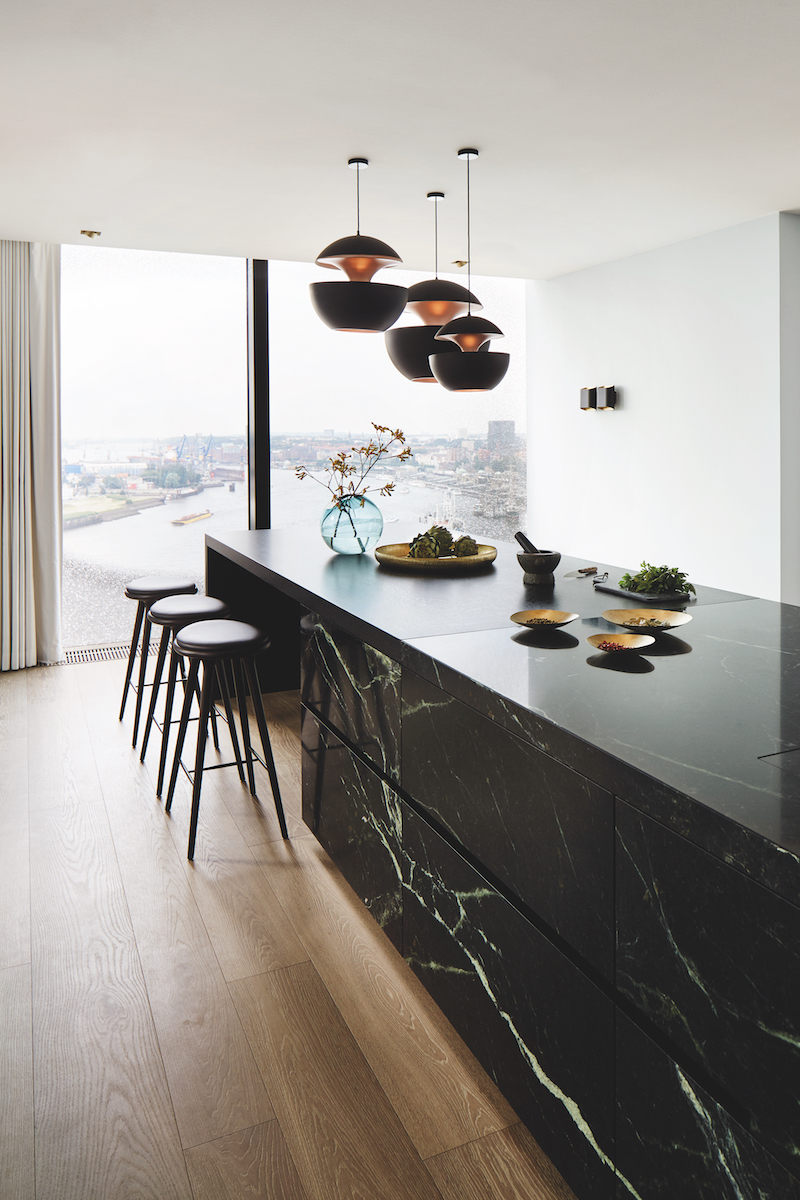
So, what’s new?
For example, we recently concluded an agreement with a quarry in Austria. This has given us access to a material that can only be mined to a very limited extent. It’s a stone called “Tauerngrün”. In geological terms, this is a serpentinite that varies in color between light green and dark green. This rock is really fascinating. It has a beautiful pattern, but is still very robust and acid-resistant. This is an important trend in recent years: People are increasingly looking for beautifully structured, even marble-like natural stones that are nevertheless extremely suitable for kitchens.
eggersmann and Schwanekamp have a large joint range. If there is nevertheless sometimes a special request, how do you deal with it?
That means a greater effort then. We first have to procure the material and calibrate it to 11 millimeters. But if higher costs are accepted, we make a lot of things possible. However, we also point out the risks. A stone like this actually has to be thoroughly tested in our laboratory first.
“YOU CAN’T DO LESS, A MATERIAL CAN HARDLY BE MORE NATURAL.”
How do such tests work?
This is a DIN test program that includes ingredients such as mustard, wine, ketchup and many other substances that are used in the household. There is a grid on which these substances are applied to test the reaction times – from one to 24 hours, depending on the type of attack on the stone. The result is evaluated afterwards as with school grades.
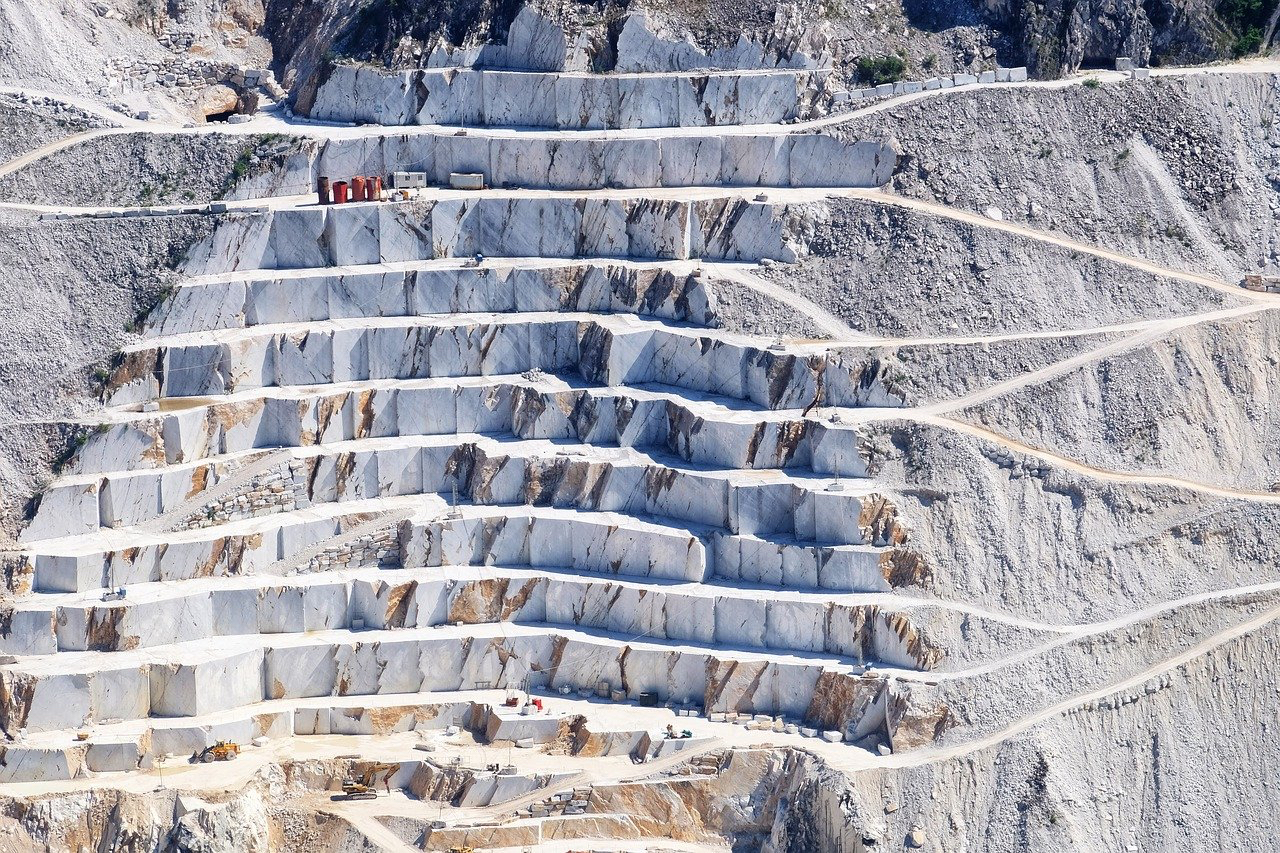
Even if a stone has been extensively tested and well impregnated, it should be carefully treated. As a natural stone professional, what advice do you give to people?
I’ll give them a care product that contains a natural stone soap. And the advice that they should apply it from time to time. This question comes up regularly: What exactly does “from time to time” mean? Then I always answer: Ask the stone itself occasionally whether it wants a little soap. In other words, you’ll notice it yourself. If it comes across as a little dry, then it can use it. You just have to ask the stone.
That’s where the dialog with the stone becomes a very real thing.
(laughs) That’s how it is.
Does the stone also forgive you if you accidentally knock a dent in it?
Most natural stones can be repaired relatively easily. The gap is filled with stone replacement material, for which we have extra cosmeticians in house who are very good at this. In German-speaking countries, our customer service can also carry out such repairs on site.
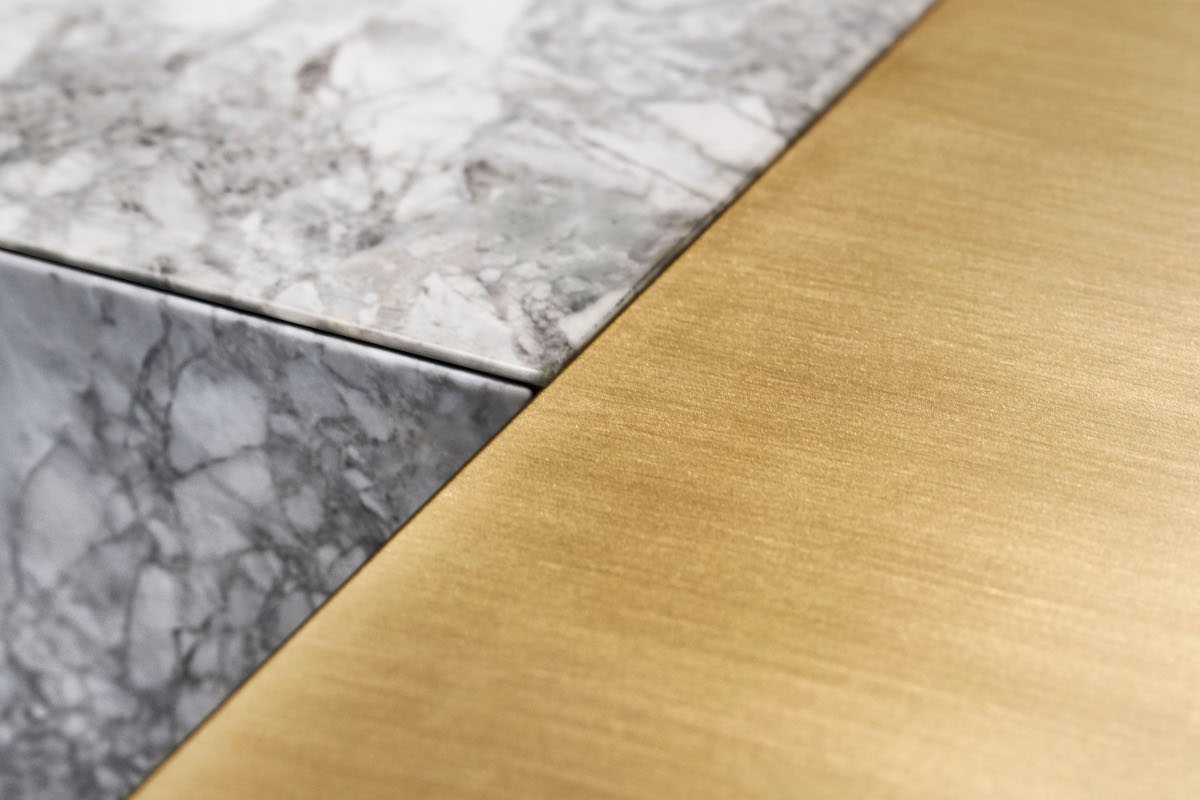
Finally, a personal question: To which stone do you yourself have the closest emotional connection?
Quite clearly: Brazilian slate. I love it. It’s not only used for kitchen surfaces, but also for many floors. There’s practically no room here that doesn’t have this stone. However, it’s a little sensitive to scratches, so I could show you exactly where I always open my wine bottle in the kitchen, for example. But that’s part of the fascination for me. It starts with how this material is obtained. The slabs are not cut but split by hand. The surface in its polished form is like silk. You can’t do less, a material can hardly be more natural.
ANOTHER DIMENSION OF KITCHEN
We are always ready to break new ground for our customers’ individual wishes. So, there is a lot to show and tell.
